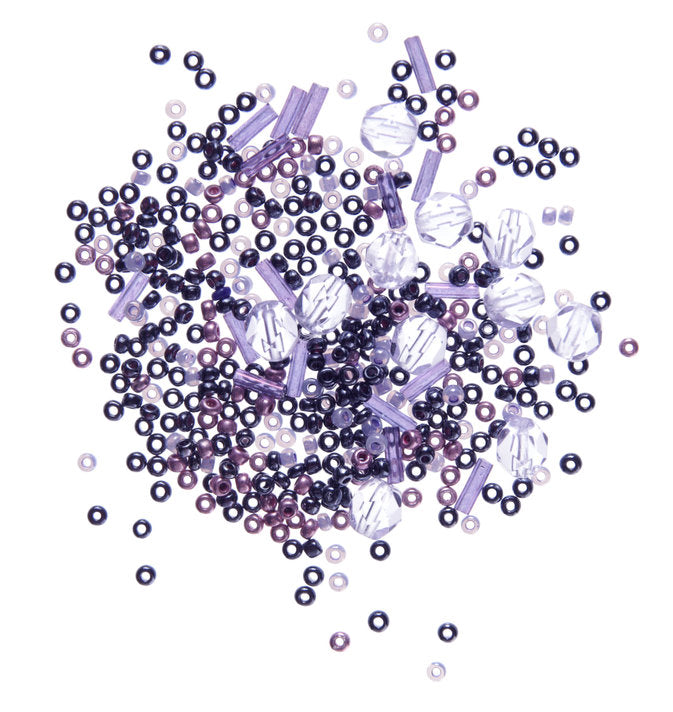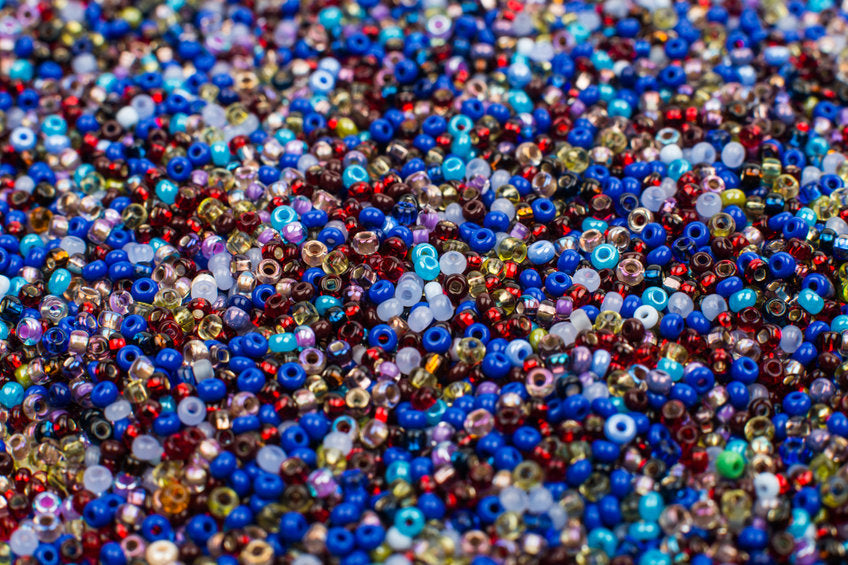History of Seed Beads in Beaded Jewelry: Sizes, Shapes, and Uses
Tracking the history of seed beads in beaded jewelry has been an interesting journey from eighth-century Murano to the current day, and it has brought us to the most fun part of all: the sizes, shapes, and uses of seed beads throughout time.

Seed beads are measured in units called "aughts", and the higher the aught number, the smaller the bead; the smaller the bead, the more beads can fit in an inch. This can vary somewhat according to where the bead is made and whether it has coatings or finishes, but this will give you a general idea: if you're working with 15 aught beads (signified as 15/o; sometimes a degree mark is used after the number, in place of the "/o"), each bead would measure approximately 1.3mm and you could fit about 25 beads along an inch of string.
Sometimes you can judge the age of a bead by its size - although very tiny beads are still being made, the majority of beads used today are between 6/o and 15/o. Smaller beads ranging between 16/o and 24/o are usually vintage/antique (and usually round in shape) or made by special order. To give you an idea of how tiny these beads can be, a 24/o bead is the size of a grain of sand, and about 50 can fit in an inch. Considering that jewelry artisans craft their designs by hand, imagine the time and care it takes to work with such small individual pieces!

Seed beads are extremely versatile and are made in a wide range of shapes: hexagonal, cylindrical, round, cube, oblong, peanut, star, and many more. With their exquisite colors, shapes, and size variations, they create amazing patterns in beaded jewelry and are also used as dramatic spacers between larger beads or crystals.
Our one-of-a-kind seed bead creations are perfect for any style or taste; contact us if you'd like to have a custom-made piece created just for you or for any special occasion.
Photo Credits:

